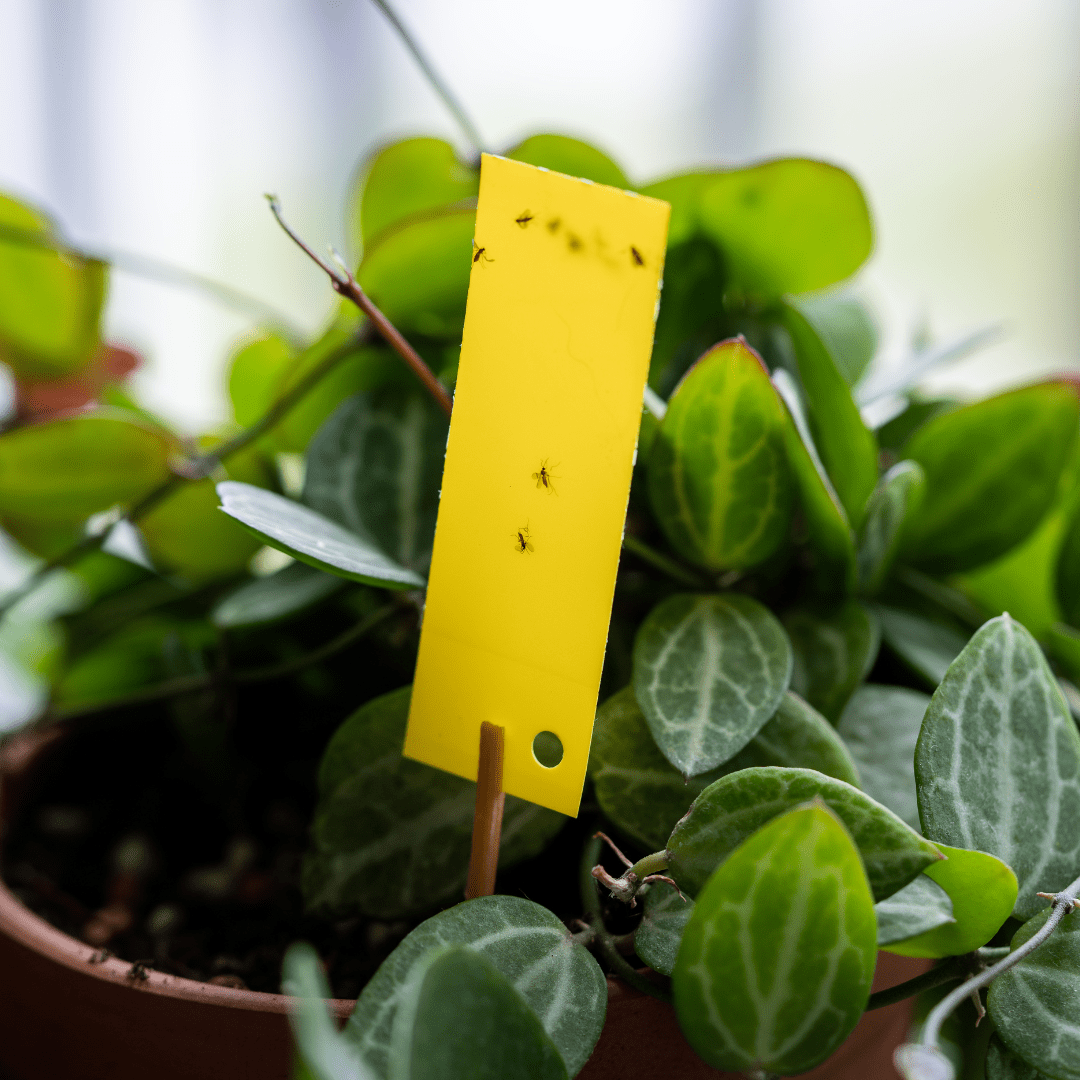Fungus gnats.
Fungus gnats, those pesky little insects that thrive in moist environments and feed on organic matter, can be a persistent nuisance for indoor and outdoor gardeners alike. Understanding the behavior and lifecycle of these tiny pests is crucial in developing effective strategies for their control. In this comprehensive guide, I will explore a range of methods to combat fungus gnats, from natural remedies to chemical solutions, as well as preventive measures and maintenance tips to ensure a gnat-free environment. Whether you’re a seasoned gardener or a beginner plant enthusiast, learning how to destroy fungus gnats for good will help you safeguard your plants and maintain a healthy growing environment.
This is a pinnable post. Tap or hover over any image in this post to pin to your Pinterest Boards.

Fungus Gnat Life Cycle
Here’s the lowdown on the life cycle of those pesky fungus gnats. It all starts with the eggs—they’re laid in the soil, usually near some damp spots where fungus and decaying stuff hang out, often in the soil of our precious potted plants or seed starts. Once those eggs hatch, out come the larvae, hungry little creatures, that chow down on organic matter and fungus. They’re like the garbage disposals of the insect world. After chomping away for a bit, they pupate, forming little cocoons where they undergo some serious transformations. Finally, they emerge as adults, ready to take flight and annoy the heck out of us plant lovers. And the cycle repeats itself, with each generation continuing the saga of the fungus gnat invasion. So, yeah, it’s a never-ending battle against these tiny troublemakers! Or is it? Let’s learn how to destroy them for good!

Understanding Fungus Gnats: Identification and Behavior
Physical Characteristics of Fungus Gnats
Fungus gnats, those pesky little buggers, are like tiny ninja flyers of the insect world. They’re super small, only a few millimeters long, but boy, do they make their presence known! With their skinny bodies and spindly legs, they zip around like they’ve had too much caffeine. And let’s talk about their wings—thin and see-through, almost like they’re wearing invisible capes. You can spot them flitting about plants or hovering near damp spots like they’re on a secret mission. Super annoying!
But the real kicker? Those big ol’ bug eyes—they’re like little black beads, giving them a curious and kinda creepy vibe. Yep, fungus gnats may be tiny, but they’ve got a whole lot of characters packed into their pint-sized frames! Oh, and they are super annoying, right? Comment down below if you agree!
Prevention Strategies: Keeping Fungus Gnats at Bay
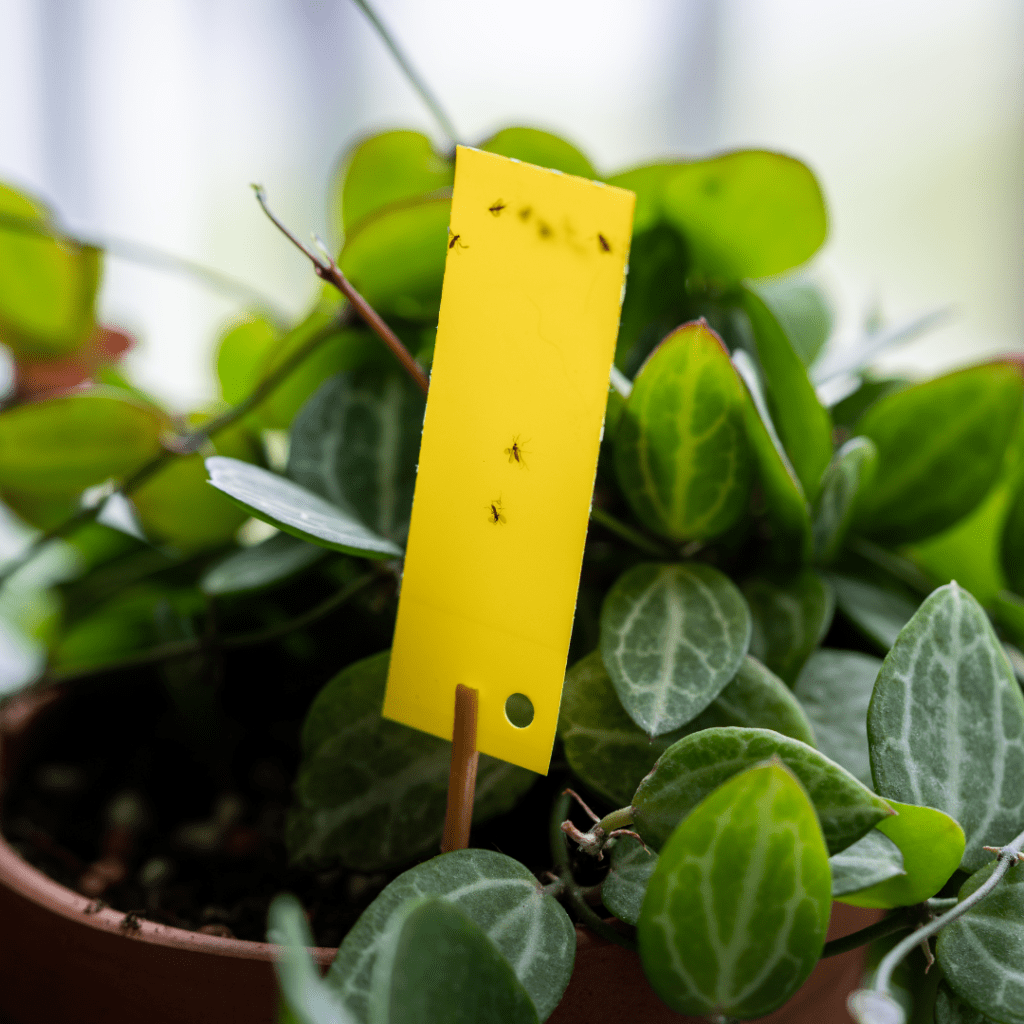
Proper Watering Techniques
First off, don’t overwater your plants—those soggy soil spots are like a five-star hotel for fungus gnat larvae. Instead, let the soil dry out a bit between waterings. And when you do water, make sure to water the soil directly, not the leaves—that’s just asking for trouble. Oh, and here’s a pro tip: try using a watering can with a narrow spout to target the soil without splashing water everywhere.
Plus, if you’ve got saucers under your pots, make sure to empty them out regularly to avoid creating a fungus gnat paradise. So, remember, keep it dry, keep it targeted, and keep those gnats at bay!
Avoiding Over-Fertilization
Let’s talk about avoiding over-fertilization to give those pesky fungus gnats the boot. Here’s the deal: too much fertilizer equals a buffet for those little buggers. So, go easy on the plant food—it’s like giving them a VIP pass to Gnat Central. Instead, stick to a balanced feeding schedule and use fertilizer sparingly. Oh, and if you’re using organic stuff like compost or manure, watch out for overdoing it—gnats love that stuff too! Remember, a little goes a long way when it comes to feeding your plants and keeping it light will help keep those gnats from throwing a party in your soil.
Natural Remedies: Non-Toxic Approaches to Combat Fungus Gnats
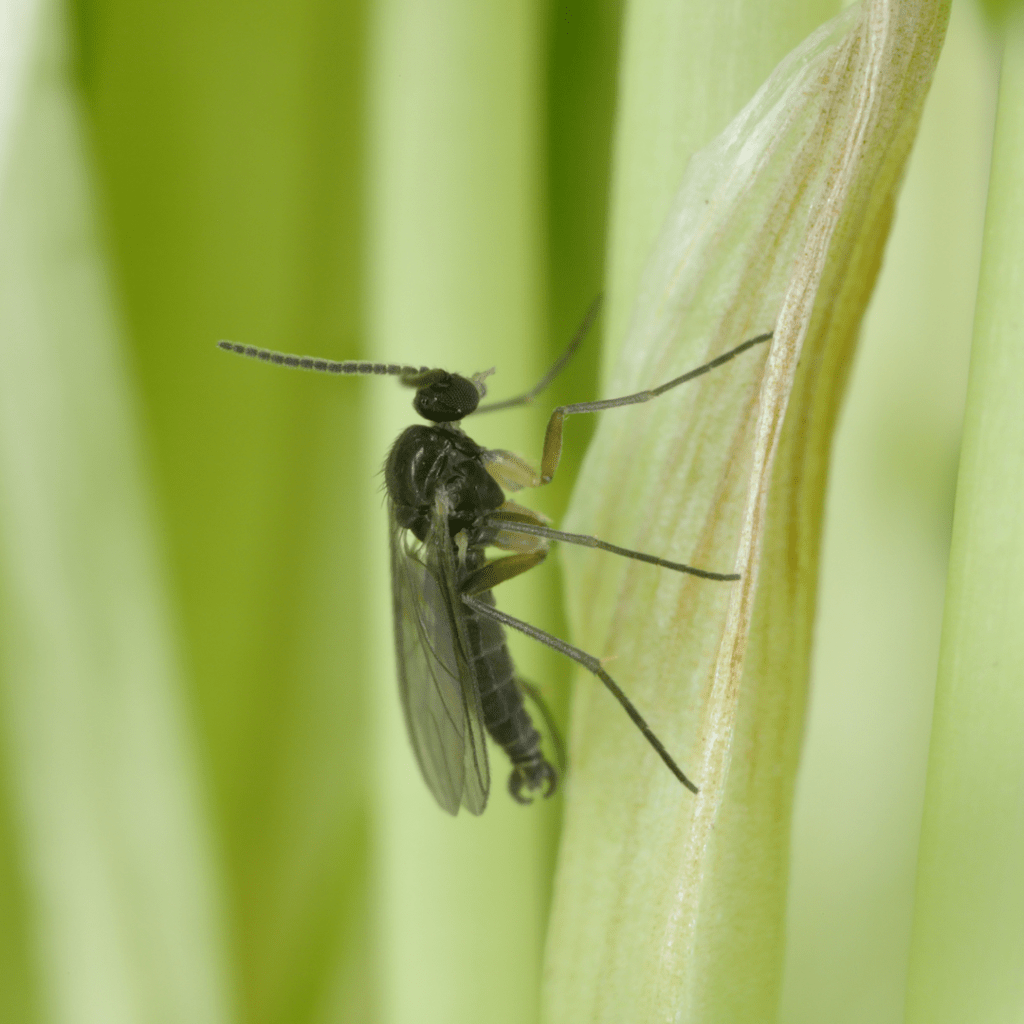
Using Neem Oil
Neem oil is like the superhero of the gardening world! First off, mix a bit of neem oil with water in a spray bottle—just a teaspoon or so per quart should do the trick. Then, spritz that solution onto the soil of your infested plants. The neem oil messes with the gnats’ heads, disrupting their life cycle and making it tough for them to lay eggs. Plus, it’s totally safe for your plants, so no worries there. Just remember to give it a good shake before you spray, because that neem oil likes to settle at the bottom. So, say goodbye to those gnats and hello to neem oil—your new plant-saving sidekick!
Implementing Diatomaceous Earth
Diatomaceous earth is like the ninja assassin of the insect world. Sprinkle a thin layer on top of your soil, and watch as it gets to work. Diatomaceous earth is made from fossilized algae, and it’s got these super sharp edges that slice and dice any bugs that try to crawl through it. It’s like laying down a bed of spikes for those gnats—ain’t nobody getting through that! Plus, it’s totally safe for your plants and pets, so no need to worry there. Just remember to reapply after watering, because it loses its mojo when it gets wet. So, sayonara, fungus gnats—diatomaceous earth is here to save the day!
Chemical Solutions: Effective Pesticides for Fungus Gnat Control
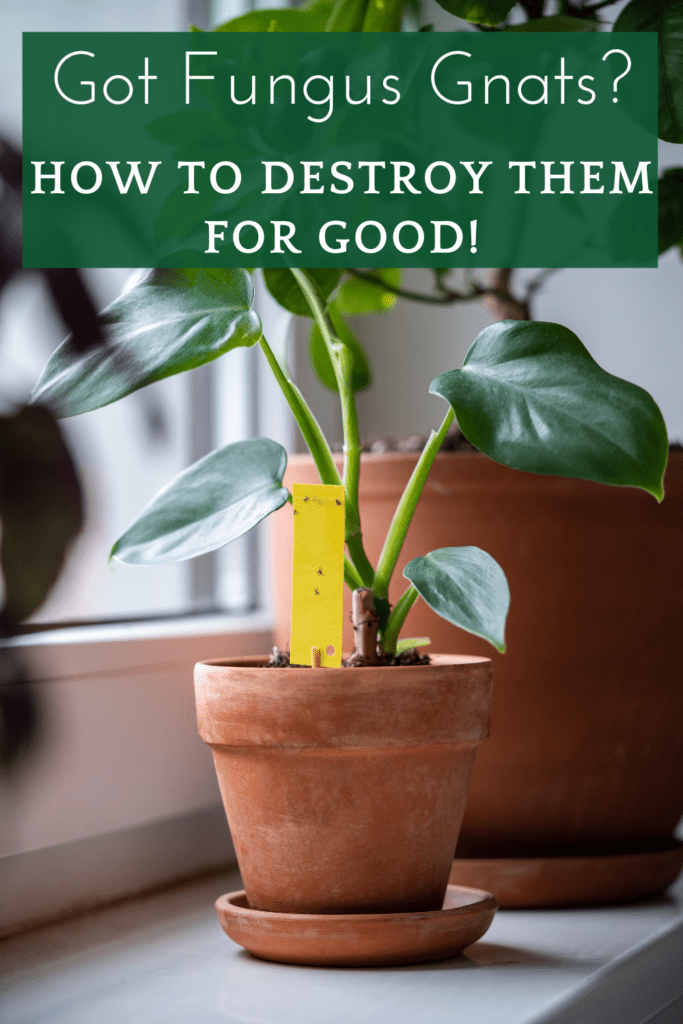
Choosing the Right Pesticide
Alright, so you’ve tried everything and those pesky fungus gnats are still crashing your plant party? Time to bust out the heavy artillery! Grab yourself a targeted pesticide made just for those little annoyances. Look for one that’s tough on gnats, but gentle on the good bugs—gotta keep that ecosystem in check, right? Find that sweet spot between power and safety, so your plants can stay healthy while you kick those gnats to the curb.
Application Tips for Pesticides
When you’re busting out the pesticides to tackle those pesky fungus gnats, less is more. Stick to the instructions like glue, aim for the trouble spots, and don’t go overboard with the chemicals—you don’t want to accidentally hurt your precious plants, right? Take a strategic approach, be like a ninja with that spray bottle, and you’ll soon be waving goodbye to those gnats and saying hello to your plant paradise once again!
Soil Management Techniques: Targeting the Root of the Problem

If your plants are playing host to fungus gnats, it’s time to take charge and kick those pesky fungus gnats to the curb! Let’s dive deep into the soil and reclaim our territory with some savvy soil management techniques.
Replacing Infested Soil
Out with the old, in with the new – sometimes a soil overhaul is necessary to bid farewell to fungus gnat larvae. Give those critters the boot by replacing infested soil with fresh, gnat-free earth, and say goodbye to buggy soil!
However, is the new soil really bug-free? We do not know the answer to this question, but we also do not want to find out later in four to six weeks when the eggs begin to hatch! So, let’s conquer a problem before it even becomes a problem!
Sterilizing the Soil (Just In Case It’s Contaminated! Because We Don’t Know!)
Sterilize Your Potting Soil Before Planting!
If you want to keep those pesky fungus gnats from crashing your green party, it’s time to bust out the big guns and sterilize that potting soil! There are a couple of effective ways to sterilize your soil for your indoor plants or seed starts. It is also a preventative measure of a practice you should continue each time you bring in new potting soil into your house or grow room to prevent reinfestation of fungus gnats.
The Baking Method
Begin by preheating your oven to around 180-200°F (82-93°C). Spread a thin layer of potting soil on a baking sheet, ensuring it’s evenly distributed. Place the baking sheet in the preheated oven and let the soil bake for approximately 30 minutes. This process effectively kills any fungus gnat larvae, eggs, or pathogens present in the soil. Once sterilized, allow the soil to cool completely before using it for planting. Just try baking your soil in your oven on a day when you know you will be alone or your family may call the Looney Bin to come and take you away!
The Boiling Water Method
Alternatively, you can pour boiling water into the soil, preferably in a large tote, give it a good mix, and allow it to sit until cool to achieve similar results.
Why Do You Have to Bake or Sterilize Your Potting Mix, You Ask?
Good question! I am glad you asked! Sterilizing your potting soil eliminates potential sources of pests and diseases, providing a healthy environment for your plants and seedlings to thrive.
Aerating the Soil
Who knew gnats were such airheads? But hey, let’s use it to our advantage! By giving the soil a good fluff-up, we’ll mess with their comfy living arrangements and make it tough for them to cozy up and hang around. And bonus—it’s great for your plants!
Aerating potting soil is like giving your plants a breath of fresh air! It’s super beneficial for a couple of reasons. First off, it helps loosen up compacted soil, making it easier for roots to grow and spread out. When soil gets too dense, it can suffocate the roots, but aerating it gives them room to breathe and thrive. Plus, it improves drainage, which is key for preventing root rot and other moisture-related issues. So basically, aerating your potting soil helps keep them happy, healthy, and ready to grow!
How to Aerate the Soil for Potted Plants
(Let’s attempt to make our plants happy and the fungus gnats mad!)
Let’s get down to business and give our potted plants a breath of fresh air! Aerating potting soil is easy-peasy!
- Grab a chopstick, a pencil, or even an aerating tool if you have one.
- Then, gently poke holes all around the soil, making sure to get down to the bottom of the pot.
- Wiggle it around a bit to loosen things up—think of it like fluffing a pillow! Make the soil fluffy!
- You can also give the soil a gentle stir with your fingers to mix things up.
- Just be careful not to disturb the roots too much.
Now your plants will thank you for the extra oxygen and room to grow and the fungus gnats will be packing up to leave! When they start flying around, go ahead and start spraying them down with a spray bottle of dish liquid! They will start dropping dead and you can clean up their tiny carcasses and dispose of them for good!
Trap Options: Trapping and Monitoring Fungus Gnat Populations
Effective Fungus Gnat Traps
We need to be vigilant about trapping and keeping an eye on those pesky fungus gnats! Get some slick traps to catch them in their tracks. Stick them in the soil or hang them above, either way, those gnats will not know what hit them. Plus, with these traps, we can keep tabs on how many are buzzing around. So, let’s get trapping and show those gnats who’s boss!
Yellow Sticky Traps

Using yellow sticky traps for fungus gnats comes with several benefits:
- Effective Attraction: The bright yellow color of the traps acts as a powerful attractant for fungus gnats, drawing them in with ease.
- Easy Monitoring: These traps provide a visual indication of the level of gnat infestation. By observing the number of gnats stuck on the traps, you can gauge the severity of the problem and track the effectiveness of your control measures.
- Non-Toxic: Yellow sticky traps are typically non-toxic and safe to use around children, pets, and plants, making them an eco-friendly option for pest control.
- Reduced Population: By capturing adult fungus gnats, sticky traps help reduce their population, thereby minimizing the risk of further infestation and damage to your plants.
- Simple to Use: These traps are easy to set up and require minimal maintenance. Just place them near the affected plants, and they’ll start working immediately.
- Cost-Effective: Yellow sticky traps are affordable and widely available, making them a cost-effective solution for controlling fungus gnats.
In summary, yellow sticky traps are a convenient, safe, and efficient way to attract and monitor fungus gnats, helping to keep your plants healthy and pest-free.
Vinegar Traps

In the above image is my simple DIY fungus gnat vinegar trap sitting between some planted pots on the window sill. This is often where I used to see fungus gnats in my home before I started implementing this adorable little trap. I rarely ever see any fungus gnats in this trap since I also implemented the sterilizing of the soil before I plant any plants in my home.
However, there is still a rare occasion I will see a bug in the trap, which is the reason I continue to use it. It looks pretty sitting between my plants and it shines in the window with the blue hue of the dish soap I use. Sometimes the color will change depending on the color of the soap I use. Keep reading to learn how I made this simple vinegar fungus gnat trap.
Using vinegar traps for fungus gnats can offer several benefits:
- Simple and Inexpensive: Vinegar traps are easy to make at home using common household items like vinegar, water, dish soap, and a container. They’re cost-effective and require minimal investment.
- Attractive Scent: Fungus gnats are attracted to the scent of vinegar, making these traps highly effective at luring them in.
- Natural and Non-Toxic: Vinegar traps are non-toxic and safe to use around children, pets, and plants, making them an eco-friendly option for pest control.
- Easy to Monitor: By regularly checking the traps, you can monitor the population of fungus gnats in your plants. The presence of gnats trapped in the solution indicates the severity of the infestation.
- Reduces Population: Vinegar traps help reduce the number of adult fungus gnats by trapping them in the solution, thereby limiting their ability to reproduce and infest other plants.
- Versatile: Vinegar traps can be placed near affected plants or strategically positioned throughout your home to target fungus gnats wherever they may be present.
Overall, vinegar traps provide a simple, natural, and effective method for controlling fungus gnats without the need for harsh chemicals or expensive equipment.
How to Make a Vinegar Fungus Gnat Trap
Making a vinegar fungus gnat trap is quick and easy! Here’s a simple method:
Ingredients:
- Apple cider vinegar or white vinegar.
- Water.
- Liquid dish soap.
- Small container (like a jar or bowl. I used a 4-ounce Mason jar).
- Plastic wrap or a lid. (I used a ziplock bag I cut to size).
- Toothpick or fork to poke holes in the plastic.
- Ribbon or twine to tie the plastic to the container.
Instructions:
- Start by filling your small container about halfway with apple cider vinegar or white vinegar.
- Add a few drops of liquid dish soap to the vinegar. The soap will break the surface tension of the vinegar, causing the gnats to sink when they come into contact with the solution.
- Dilute the vinegar with a bit of water. This helps to increase the volume of the solution while still retaining its attractiveness to the gnats.
- Give the mixture a gentle stir to ensure the soap is evenly distributed.
- Cover the container with plastic wrap, securing it tightly around the rim. Alternatively, you can use a lid with small holes punched in it for the gnats to enter.
- Use a toothpick or fork to poke several small holes in the plastic wrap or lid. These holes will allow the gnats to enter the trap.
- Place the trap near the affected plants or in areas where you’ve noticed a lot of gnat activity.
- Check the trap regularly and replace the solution as needed. Empty the trap and refill it with fresh vinegar and soap mixture to maintain its effectiveness.
That’s it! Your homemade vinegar fungus gnat trap is ready to catch those pesky bugs and help keep your plants gnat-free!
Maintenance Tips: Sustaining a Gnat-Free Environment
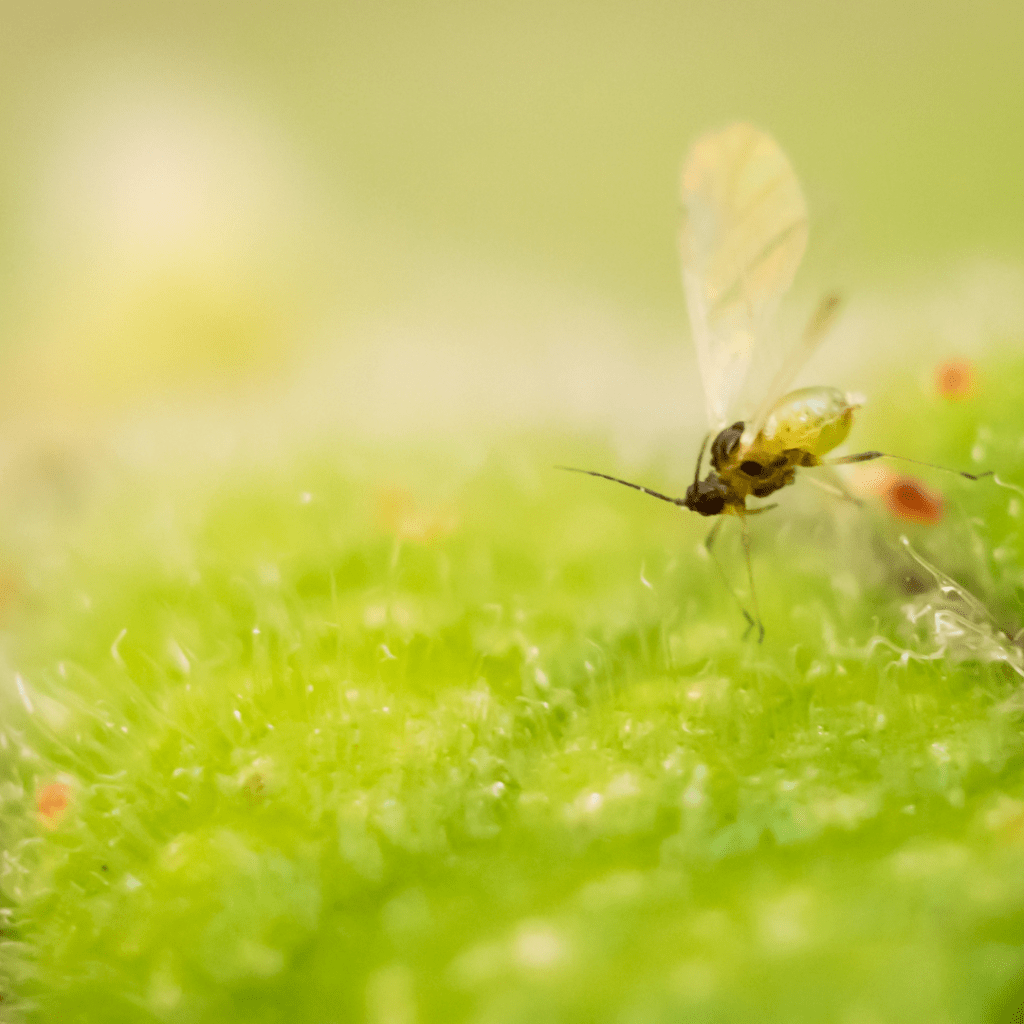
Don’t let those fungus gnats make a comeback – keep your environment gnat-free with these maintenance tips to show those pests who are really in charge!
Regular Inspection and Monitoring
Stay one step ahead of the gnats by regularly inspecting your plants and soil. Catching any potential gnat gatherings early on will prevent them from turning your plant party into a gnat rave.
Here are some ways you can regularly inspect and monitor the fungus gnat population in your home or grow room:
- Yellow Sticky Traps: Place yellow sticky traps near your plants or in areas where fungus gnats are commonly seen. Check the traps regularly for trapped gnats, which will give you an indication of the population size.
- Sticky Cards: Hang sticky cards above your plants to capture adult fungus gnats in flight. These cards can be checked regularly for trapped insects.
- Sticky Tape or Barrier: Apply double-sided sticky tape around the base of pots or along the edges of grow trays. This can help capture adult fungus gnats as they attempt to move between plants.
- Watering Practices: Monitor your watering practices to ensure you’re not overwatering, which can create favorable conditions for fungus gnat larvae. Allow the top layer of soil to dry out between waterings to discourage gnat breeding.
Visual Monitoring and Proactive Measures
- Visual Inspection: Take some time to visually inspect your plants and growing areas regularly. Look for signs of fungus gnat activity such as larvae in the soil, damaged roots, or tiny flies flying around plants.
- Soil Surface Inspection: Regularly inspect the surface of the soil in your pots for adult fungus gnats. Look for tiny black flies hovering around the soil or resting on the surface.
- Root Inspection: Periodically inspect the roots of your plants for signs of damage caused by fungus gnat larvae. Gently remove plants from their pots and check the root system for any signs of feeding damage or larvae presence.
- Temperature and Humidity Monitoring: Keep track of the temperature and humidity levels in your grow room or indoor environment. Fungus gnats thrive in warm, humid conditions, so maintaining optimal levels can help discourage their presence.
By implementing these monitoring methods regularly, you can stay on top of the fungus gnat population in your home or grow room and take proactive measures to control their numbers.
Proper Plant Maintenance
Let’s talk about keeping those pesky fungus gnats at bay with some proper plant TLC!
- First off, make sure you’re not overwatering your plants—gnats love soggy soil, so let it dry out a bit between waterings.
- Next, keep your plant area clean and tidy, clearing away any dead leaves or debris where gnats like to hang out.
- Opt for well-draining soil to discourage gnats from laying eggs, and consider using a layer of sand or gravel on top of the soil to make it less appealing for them.
- Finally, keep an eye on your plants for any signs of trouble, like yellowing leaves or wilting, and take action promptly to nip any gnat infestations in the bud!
With a little maintenance and vigilance, you can keep your plants happy and gnat-free!
Common Mistakes to Avoid
Don’t fall into the trap of common gnat-fighting blunders. Learn from the mistakes of others and avoid the pitfalls that could leave you scratching your head (and your plants itching for relief).
Fungus gnat infestations can happen to the best of us, but they’re often caused by a few common mistakes.
Avoid These Common Mistakes!
- Overwatering: One of the biggest culprits! Gnats love damp soil, so if you’re watering too frequently or giving your plants more water than they need, you’re creating the perfect breeding ground for these pests.
- Poor Drainage: If your pots don’t have proper drainage holes or if you’re using soil that doesn’t drain well, excess moisture can accumulate, inviting fungus gnats to set up camp.
- Using Organic Matter: While organic matter like compost can be great for plants, it can also attract fungus gnats if not properly managed. Excessive organic material in the soil can provide a food source for gnat larvae.
- Ignoring Hygiene: Letting dead leaves or plant debris accumulate in your pots or around your plants provides hiding spots and food sources for fungus gnats. Keeping your growing area clean and tidy can help prevent infestations.
- Bringing Infested Plants Indoors: If you bring home a new plant that’s already infested with fungus gnats, you risk introducing them to your indoor garden. Always inspect new plants carefully before bringing them inside.
- Not Addressing Underlying Issues: Sometimes, a fungus gnat infestation can be a symptom of other problems, like over-fertilization, poor air circulation, or inadequate lighting. Addressing these underlying issues can help prevent future infestations.
By avoiding these common mistakes and practicing good plant care habits, you can minimize the risk of fungus gnat infestations and keep your plants healthy and happy.
Conclusion
By implementing the strategies and techniques outlined in this article, you can take proactive steps to eradicate fungus gnats and protect your plants from potential damage. Remember, consistency and diligence are key to maintaining a gnat-free environment. With a combination of prevention, natural remedies, and expert advice, you can effectively combat fungus gnats and enjoy a thriving garden or indoor plant collection. Here’s to saying goodbye to fungus gnats for good!
Resources: Here are some helpful resources for further information.
- Homemade Gnat Traps That Actually Work – By Family Handyman
- Getting Rid of the Fungus Gnats Among Us – By Good Earth Plants
- Homemade Gnat Trap – By Sweet T Makes Three

Frequently Asked Questions
1. How do I know if I have a fungus gnat infestation?
If you suspect you have a fungus gnat infestation, there are several telltale signs to look out for. The most obvious indicator is seeing adult fungus gnats flying around your houseplants or near windows. These tiny black flies typically have long legs and are commonly found in damp, organic-rich soil. Another key sign of an infestation is spotting larvae in the soil of your plants – they are small, white worm-like creatures that feed on decaying plant matter. Additionally, if you notice your plants wilting, yellowing leaves, or stunted growth despite proper care and watering, it could be a sign of these pests damaging the roots. To confirm an infestation, try placing yellow sticky traps near affected plants to catch any flying adults and inspect the top layer of soil for larvae.
2. Are fungus gnats harmful to plants?
Fungus gnats are primarily considered a nuisance rather than a direct threat to plants. While they don’t typically feed on plant tissue, they are attracted to moist potting soil where they lay their eggs. The larvae of fungus gnats can sometimes feed on organic matter in the soil, as well as young roots, which can hinder the growth and development of plants. However, their damage is usually minimal and doesn’t pose a significant risk to the overall health of well-established plants. To prevent fungus gnat infestations, it’s important to avoid overwatering plants, provide good drainage, and use yellow sticky traps or biological control methods like beneficial nematodes. Overall, while annoying to deal with, fungus gnats are more of an irritation than a serious threat to plant health.
3. Can fungus gnats affect indoor plants as well as outdoor gardens?
Yes, fungus gnats can definitely affect indoor plants as well as outdoor gardens. These tiny pests lay their eggs in the moist soil of plants, where the larvae feed on organic matter and plant roots. In indoor plants, overwatering or keeping the soil too wet can create a perfect breeding ground for fungus gnats. The adult gnats are generally more of a nuisance than a threat to plant health, but their larvae can cause damage by slowing plant growth and making them more susceptible to other diseases. To prevent fungus gnats from infesting your indoor plants, let the soil dry out between waterings and use sticky traps or biological controls like nematodes to manage their populations effectively. In outdoor gardens, maintaining good drainage and air circulation can also help reduce the risk of fungus gnat infestations.
4. What is the most effective way to get rid of fungus gnats without using harmful chemicals?
If you’re dealing with pesky fungus gnats and want to get rid of them without resorting to harmful chemicals, there are several natural ways to tackle the problem. One effective method is utilizing sticky traps, which can help trap adult gnats and prevent them from laying eggs in your soil. Another option is using a mixture of hydrogen peroxide and water (1 part hydrogen peroxide to 4 parts water) to kill larvae in the soil. Additionally, introducing beneficial nematodes into your soil can help control the gnat population by preying on larvae. Lastly, letting your soil dry out completely between waterings can also discourage fungus gnat infestations, as they thrive in moist environments. By combining these methods, you can effectively combat fungus gnats without harming yourself or the environment with harmful chemicals.
Summary
I hope I have inspired you to get rid of fungus gnats for good with these tips and products.
If you were encouraged by this post, I invite you to check out my FREE Printables Page for fun free printables, planners, and charts.
ENTER MY FREE Printables Page HERE
Here are some more of my gardening inspiration posts to check out!
How to DIY a Milk Jug Drip Irrigation System!
Why Cedar Mulch Is The Perfect Natural Weed Barrier
Onions: How to Grow Onions for Storage
Peas: How to Grow Garden Peas for a Bumper Crop
Carrots: How to Grow Carrots for a Bountiful Harvest
Prep Your Garden for Spring Planting with These Expert Tips!
How to Grow a Prepper Garden to Survive and Thrive
The Best Garden Tools You Need for a Productive Season
Fastest Growing Vegetables for Your Survival Garden
How to Grow Marigolds As Pest Control In Your Vegetable Garden
Must-Have Tools for a Successful Balcony Vegetable Garden
How to Effectively Combat Powdery Mildew in Your Garden
The Best Tips for Organic Gardening
How to Release Ladybugs In Your Garden for Organic Pest Control
The Best Garden Snail Control Strategies
The Best Spring Vegetables to Grow in Your Garden
Seed Starter Mix: How To Make Your Organic Seed Starter Mix At Home
How to Grow a Productive Canning Garden
How to Plant and Grow a Salsa Garden
Easiest Heirloom Vegetable Seeds to Grow Now
How to Use the Hand Twist Claw Tiller: Tackling Tough Soil
More Fun Gardening Posts to Check Out!
Planning Your Garden: How to Plan a Vegetable Garden: Expert Green Thumb Tips!
Winterizing the Garden: How to Winterize Your Vegetable Garden: Step-by-Step Checklist
Mulching the Garden: How to Make Leaf Litter Mulch
Grow a Pumpkin Patch: How to Grow a Pumpkin Patch in Your Backyard
How to Grow a Fall Garden: 9 Best Fall Crops
Clever Ways to Incorporate Indoor Composting into Your Home
How to Start Composting for the Garden: A Step-by-Step Guide
The Ultimate Guide to Composting in Your Suburban Backyard
Why I Built A Survival Garden in My Backyard
16 Best Medicinal Herbs to Grow in Your Garden Now
Blessings,
The Off Grid Barefoot Girl

